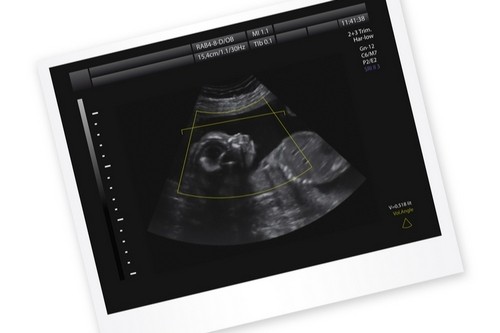Natural birth is, of course, the most suitable way of delivery. However, unfortunately, such childbirth is not always possible. For a variety of reasons, a woman may be advised to have a planned cesarean section. For many women who are inclined to natural birth, such advice can be a real shock.
This condition includes fear of abdominal surgery, and fears for a child and even some psychological complexes associated with the fact that the woman did not manage to give birth herself.
In order to somehow smooth out this condition, you need to understand how a planned cesarean section goes, preparation for it and the postoperative period. This will help get rid of fears of a caesarean section.
Indications for cesarean section
Why can doctors insist on a scheduled surgery? There can be many reasons for this, and they can be related either directly to the development of the fetus or the state of the woman’s reproductive system, or to other internal systems of the body.
So, an indication for delivery by surgery may be a partial or complete presentation of the placenta. In this case, the placenta partially or completely blocks the baby from leaving the uterus. Natural birth in this case is not only impossible, but also dangerous. Contraction can cause placental abruption and heavy bleeding. More about placenta previa →
That is why doctors carefully monitor the position of the placenta throughout pregnancy. As the uterus grows, the position of the placenta can change, and the low located placenta can rise higher, or block the uterus.

Also, an indication for cesarean section may become detachment of the placenta. In this case, the fetus stops receiving nutrients and oxygen from the mother’s blood. Acute hypoxia develops that threatens the life of the child.
The presence of scars on the uterus after previous operations, as well as the presence of pathological changes in the uterus, for example, myoma, can all become a reason for the operation. The mere presence of scars, of course, does not make natural birth impossible. But it’s important to understand that a fresh or poorly healed scar may not withstand stress. Therefore, before giving consent to childbirth, doctors evaluate the condition of the suture.
A planned cesarean section will be relevant in the case of multiple pregnancy. Moreover, if in the case of twins, obstetricians will monitor the accompanying factors, and may well allow natural childbirth, then three or more children are likely to be born through surgery.
Obstacle for natural childbirth may be the position of the fetus. So, with transverse, foot or frontal presentation, obstetricians will clearly recommend a cesarean section. This can also be discussed in the case of gluteal previa, however, here doctors are likely to be less categorical.
Optometrists can also insist on a planned cesarean section: if a woman detects retinal detachment or a high degree of myopia. Natural birth with such pathologies can lead to complete or partial loss of vision.
How to prepare for cesarean section?
The date of surgery is prescribed in advance based on several indicators.
First, they are guided by the estimated date of birth. The body of the mother and baby should be fully prepared for childbirth. This will ensure the timely appearance of milk in the mother, as well as the good condition of the child after surgery.
Secondly, the diagnosis also matters, because of which the birth must end in surgery. So, a multiple pregnancy is rarely able to convey to term.
Thirdly, each maternity hospital has its own schedule of operations, in accordance with which caesarean patients are prescribed. Thus, it is very difficult to know in advance when a planned cesarean section will be done.
1-2 weeks before the appointed date, the woman is placed in the hospital to conduct all necessary examinations. In particular, it is necessary to donate blood, urine and smear for analysis. This allows you to assess the health status of the mother. If any deviations are detected, the necessary treatment is carried out. In addition, a blood group and Rh factor analysis is required.
It is equally important to assess the condition of the fetus. For this, an ultrasound and CT scan are required, in some cases, dopplerometry. If pregnancy proceeds calmly, all these studies can be done in advance, and spend the last days before surgery at home. In this case, the woman appears in the hospital the day before the cesarean section.
The day before, a woman is talking to an obstetrician and anesthetist. They talk about various types of anesthesia, find out whether the patient has experienced anesthesia before, how she suffered. Based on the data received and the woman’s wishes, the most suitable anesthesia option is selected. Most often it is recommended to do epidural anesthesia. It affects the fetus less, and it’s safer for the woman’s body. In addition, in this case, the patient remains conscious and can see her baby immediately after birth.
What happens on the day of surgery?
As a rule, cesarean section is prescribed for morning or afternoon hours. After 6 pm the day before, a woman should not eat and drink. The patient’s stomach should be empty. Otherwise, the contents of the stomach due to anesthesia can get into the respiratory tract. Before surgery, you must also cleanse the intestines. To do this, an enema is done in the morning.
After that, the woman changes into a shirt and a bathrobe provided by the hospital. The list of things that can be taken into the operating room depends on the particular hospital and its specific orders. Somewhere they will allow them to take with them a bottle of water, a phone, a charger, in others – all this will be prohibited. It is better to find out in advance from your doctor what orders they have.

How does a planned cesarean section happen?
In the operating room, a woman is placed on the table and anesthetized. Then, a screen is installed in the chest area so that the patient does not see the operation process. Only after this is the first incision made on the abdominal wall, and after that on the uterus. After 5-8 minutes after the start of the operation, the child is removed outside. The next stage is the assessment of the condition of the uterus, removal of the placenta, and suturing of incisions. As a result, the whole procedure takes about 40 minutes.
That’s probably all that can be said about how a cesarean section goes. A video with a detailed description of the process will help to more fully and clearly show how such an operation proceeds.
In some cases, if no complications are foreseen, the patient’s husband or mother may be allowed to be present in the operating room. Naturally, they will be at the head of the bed, and, like the mother of the child, they will not see the process itself. But they will be able to support the woman and see the baby immediately after childbirth.
Postoperative period
The first day a woman should be in intensive care, where her condition will be constantly monitored. The first few hours, she will come to her senses, move away from anesthesia. She will be given pain medication. After 6-8 hours, the patient will be helped to get up and go to the toilet.
The next day, the newly minted mother is transferred to the postpartum unit, where she will receive pain medication and other medications. In addition, every day she will be treated with a seam. It is also necessary to undergo a daily examination, which will assess the degree of contraction of the uterus.
On the 5th day, if there are no deviations, the suture is removed, and after another day they are discharged from the hospital.
Woman’s behavior at home after elective cesarean section
After returning home, it is very important to observe some rules for seam care. It needs to be regularly processed and monitored for its condition. It must be dry and clean.
You can wash after a cesarean section after 1.5 months, and after 2 – take a bath. About the same amount of time is necessary to refrain from physical exertion and sexual activity. Otherwise, the seam may break.
Significantly accelerate wound healing will help postoperative bandage. It will support the abdominal muscles, reduce the load on the spine. However, you should not wear it constantly, since the abdominal muscles must also work independently.
As an additional material, it makes sense to watch the video “How to make a cesarean section”. It will help a woman to tune in a positive way, to accept and understand the need and safety of this operation. And the success of the operation largely depends on the mood of the woman.



